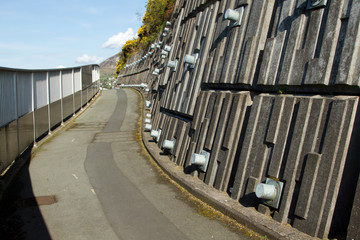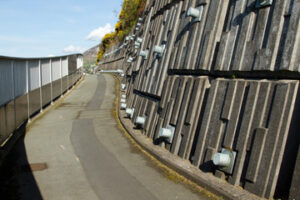Colorado Springs Masonry is a beautiful building material that adds to the charm of historic towns and even your own home. However, proper maintenance is key to avoid damage and costly repairs.
White deposits, known as efflorescence, can form on brick walls and weaken the structure. Prevent this by reducing moisture levels and using waterproofing agents.

Masonry has been used for centuries to construct a variety of structures, from buildings and monuments to bridges and dams. Throughout history, masonry techniques have evolved to accommodate new materials and building styles. Today, masons build with a wide range of materials and use various methods to create complex and visually striking designs. Durability and sustainability are just two of the reasons masonry is a popular choice for modern construction.
The first masonry structures were built by prehistoric humans and were quite simple, consisting of stacked stones without mortar to hold them together. Over time, humans learned to shape and carve stone to create more intricate shapes, and began to use mortar to hold the stones together. The Egyptian pyramids and the Sphinx are just two examples of the remarkable stone craft that ancient masons employed. The soaring archways and ceilings of Greek temples were constructed using the corbelling technique, in which large overlapping blocks are placed to form a curved structure.
During the Renaissance, master masons developed new techniques to improve the quality of their work. They began to use keystones, which helped distribute weight more evenly in arches, and they also experimented with different types of mortar. These innovations led to more sophisticated building projects, such as the towering amphitheaters of the Roman empire.
In the 16th century, the invention of the truss (a framework of support beams made of wood or metal) and the development of high-tensile strength building materials reduced the importance of masonry for spanning spaces. However, the invention of portland cement in the 19th century returned masonry to its former role as a building material.
Masonry uses a variety of materials to create strong and durable structures. Clay bricks are a popular choice due to their durability and classic look, while stone is another commonly used material in masonry construction. Both materials are long-lasting and versatile enough to suit a wide range of home styles. Concrete is also a common building material in masonry, and it can be used alone or combined with bricks to achieve different aesthetic looks.
In addition to the different types of masonry materials, there are also various methods of construction that can be employed. For example, insulating concrete forms (ICFs) are a specialized form of masonry that helps to improve the energy efficiency of a structure. This is achieved by filling the cavities of the ICFs with insulation, which then allows the masonry to act as a thermal mass.
During the construction of a masonry structure, it is important to use the proper tools and techniques to ensure that the finished product will be of high quality. This includes using the right mortar mix, which is made up of cement powder, sand, and water. Having the right mixture consistency will ensure that the individual masonry units adhere properly and hold up over time.
Masonry can be prone to moisture damage, which can affect the structural integrity of the structure. This can be caused by rainwater intrusion, freeze/thaw cycles, or chemical attack. The moisture in a masonry structure must be controlled as it can lead to corrosion, damage to the surface of the material, and structural destabilisation.
The most effective way to mitigate these problems is through preventative maintenance, such as regular inspections and repairs. This can help to identify potential issues before they become more serious problems that may require costly and complicated repairs. Masonry is also subject to seismic disturbances, which can cause significant damage to unreinforced masonry buildings. This type of damage can be avoided by implementing effective seismic prevention measures. This is possible through the development of appropriate numerical models to assess the dynamic response of a masonry structure and design improvements accordingly.
Masonry is often used to create horizontal surfaces, and for both practical as well as purely decorative purposes. Patios, walkways and driveways are popular spaces for masons to work their magic, and can be designed to complement your home and design aesthetic with a range of materials and laying patterns. From rustic uncut flagstone slabs to elegant herringbone brick pavers, the possibilities are endless!
A classic form of masonry is block or unit masonry, which features stones or blocks of various sizes arranged and fitted tightly together with cement mortar. This technique is particularly popular in the Old World, where countless ancient structures are constructed from it.
The Renaissance saw a change in the way that masons approached their craft, with the use of keystones helping to distribute weight evenly within arches. The invention of portland cement and the development of high-tensile-resistant materials also contributed to a shift in the role that masonry plays, which returned it to its essentially pre-Roman role as a structural building material for vertical wall enclosures and partitions.
Modern-day masons still rely on a range of construction techniques when working with masonry. However, with a number of environmental and safety considerations in mind, the way that these techniques are employed can make all the difference in the outcome of a masonry project.
For example, the use of seismic bands has helped to dramatically improve masonry structures’ ability to resist lateral forces during earthquakes. In addition, the development of post-tensioning, which provides an additional axial load to masonry walls, has led to an increase in in-plane strength, while reducing the risk of residual wall displacements.
Regardless of whether you are looking to have a mason construct a complex, high-rise structure or simply a simple walkway, there is no denying that this type of construction adds value and style to any property. Choosing the right mason to tackle your next project will help ensure that the finished result is as expected, and more importantly, safe.
Masonry is a durable and ecologically friendly building material. It is long-lasting, requires minimal maintenance, and can be made from recycled materials. This type of construction supports green building practices, which are a response to traditional building methods that contribute to poor occupant health, natural resource depletion and excessive maintenance costs and energy consumption.
Concrete masonry structures use less energy, consume fewer materials, and produce fewer greenhouse gases during their life cycle than buildings constructed with other materials, such as steel. Moreover, they can also withstand natural disasters such as earthquakes and hurricanes. These characteristics make brick and stone a smart choice for sustainable building.
A masonry building is inherently green because it uses non-combustible materials, which reduces the risk of fires and can prevent damage from other sources, such as winds, snowstorms, or ice. Additionally, masonry buildings can be designed to meet LEED (Leadership in Energy and Environmental Design) certification standards.
Modern technology is being used to improve masonry construction efficiency, including automated material handling systems, robotics and automation, and artificial intelligence. These innovations allow workers to focus on creativity and expertise while machines handle tedious tasks.
Many masonry products are made from local and easily available materials, which reduces transportation-related emissions. Additionally, they can be reused for new projects, which further reduces waste and supports sustainable construction practices. Additionally, bricks can be recycled to become new masonry materials or aggregates, which reduces the need to extract, process and manufacture virgin materials.
Masonry is inherently resilient because of its acoustic and insulating properties. These characteristics make it a good choice for schools, hospitals, and other types of public buildings. Masonry can help reduce noise pollution and improve the acoustic comfort of indoor spaces.
Masonry can be made in a wide range of aesthetics, which allows designers and builders to create unique spaces that are both functional and appealing. For example, bricks can be textured to give them a rustic look or colored to match a specific style or palette. In addition, many masonry blocks can be produced to look like wood or stone.



